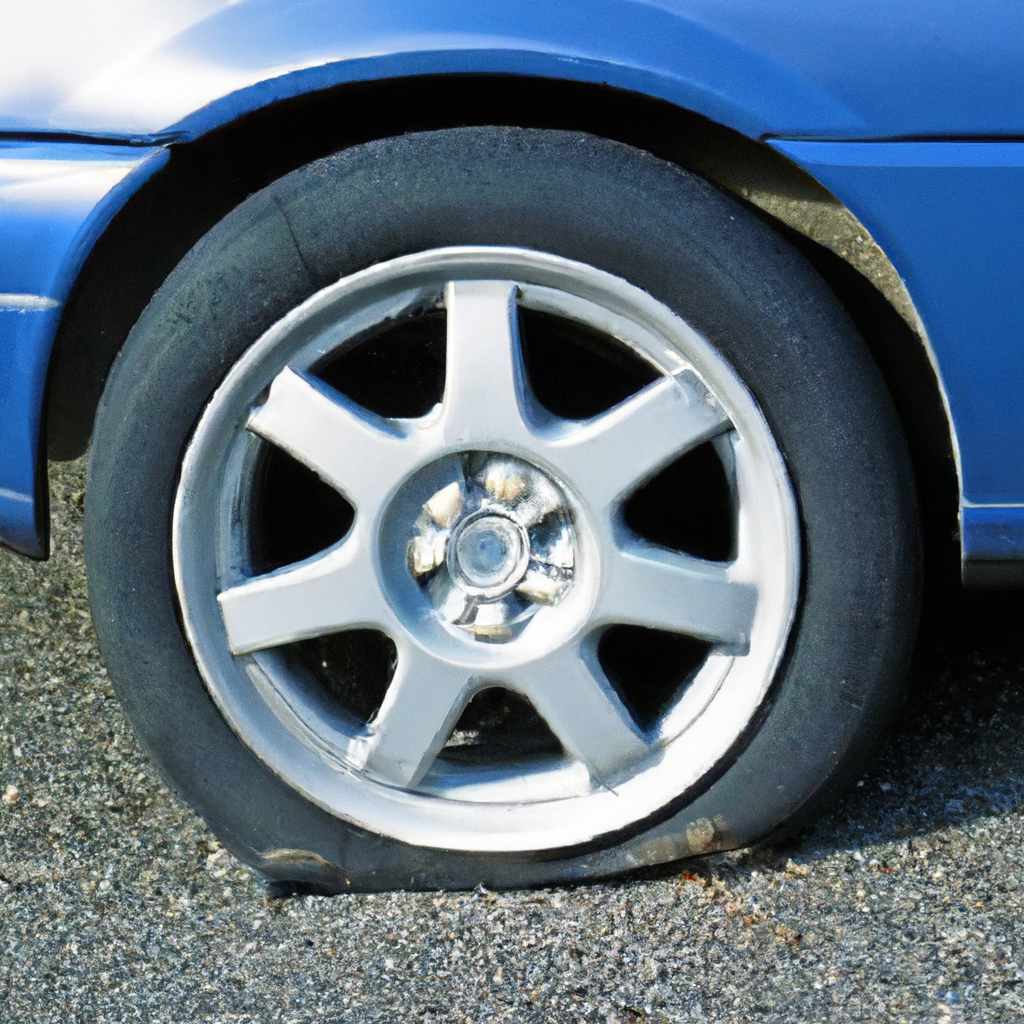You’ve probably heard about run-flat tires and wondered if they require a special type of wheel. Well, wonder no more! In this article, we’ll answer this burning question and provide you with all the information you need to know about run-flat tires and the wheels they require. So, let’s dive right in and discover if these innovative tires require a unique type of wheel or if they can be mounted on your standard rims.

Overview of run-flat tires
Run-flat tires are a type of tire designed to allow a vehicle to continue driving safely even after a loss of air pressure. These tires have gained popularity in recent years due to the added convenience and peace of mind they offer to drivers. In this article, we will discuss the definition of run-flat tires, the advantages they provide, the various types of run-flat tire systems available, the characteristics of run-flat tires, the wheel requirements for these tires, the types of wheels suitable for run-flat tires, the importance of tire pressure monitoring systems (TPMS), considerations when replacing run-flat tires, the benefits and drawbacks of run-flat tires, maintenance and care for these tires and wheels, and the emerging trends in run-flat tire technology.
Definition of run-flat tires
Run-flat tires are specifically designed to maintain their shape and support the weight of a vehicle, even in the event of air pressure loss. Unlike traditional tires, which flatten when punctured or lose air pressure, run-flat tires are equipped with reinforced sidewalls that provide structural support and allow the tire to continue supporting the vehicle’s weight.
Advantages of run-flat tires
One of the primary advantages of run-flat tires is their ability to allow drivers to continue driving after a loss of air pressure, eliminating the need for immediate roadside assistance or the inconvenience of having to change a tire in a dangerous or uncomfortable location. This added convenience provides drivers with a sense of security and minimizes the risk of being stranded in hazardous situations. Additionally, run-flat tires can help improve fuel efficiency by reducing the weight of the vehicle, since they eliminate the need for a spare tire and jack.
Types of run-flat tire systems
There are several types of run-flat tire systems available, each with its own unique characteristics and benefits. The most common types include self-supporting run-flat tires, auxiliary-supported run-flat tires, and self-sealing run-flat tires. Self-supporting run-flat tires have reinforced sidewalls that enable them to support the weight of the vehicle even after a loss of air pressure. Auxiliary-supported run-flat tires have a support ring or internal structure that provides additional support to the tire. Self-sealing run-flat tires are equipped with a special sealant that can temporarily repair small punctures, allowing drivers to continue to their destination.
Characteristics of run-flat tires
Reinforced sidewalls
One of the key characteristics of run-flat tires is their reinforced sidewalls. These sidewalls are made of a stronger, more durable material compared to traditional tires, allowing them to maintain their shape and structural integrity even with limited or no air pressure. The reinforced sidewalls provide support and prevent the tire from collapsing, enabling the vehicle to continue driving despite a tire puncture or loss of air pressure.
Self-supporting nature
Run-flat tires are self-supporting, meaning they can bear the weight of the vehicle even when they are completely deflated or have minimal air pressure. This self-supporting nature is made possible by the reinforced sidewalls and internal construction of the tire. It ensures that the tire remains in contact with the road surface, preserving steering control and stability for the driver.
Limited mileage capabilities
While run-flat tires offer the convenience of continued driving after a loss of air pressure, it is important to note that their mileage capabilities are limited. Due to the reduced amount of cushioning air within these tires, they are typically designed to be driven for a limited distance and at reduced speeds after a puncture or loss of air pressure. This limitation is intended to prevent overheating and the risk of tire failure, and it is essential for drivers to consult their tire manufacturer’s guidelines to understand the specific mileage limitations.
Understanding wheel requirements for run-flat tires
Compatibility with run-flat tires
Not all wheels are compatible with run-flat tires. Run-flat tires require wheels designed specifically to accommodate the unique features and characteristics of these tires. The wheels must have the necessary structural integrity to support the weight of the vehicle even when the tire has lost air pressure. It is important to consult the vehicle manufacturer’s guidelines or seek professional advice when selecting wheels for run-flat tires to ensure proper compatibility.
Importance of wheel design
The design of the wheel plays a crucial role in the performance and safety of run-flat tires. The wheel must have the appropriate dimensions and specifications to fit the tire properly and maintain a secure seal. It should also have adequate strength and rigidity to withstand the extra stress and load that may be imposed on it when the tire is run-flat. Therefore, choosing a wheel design that is specifically engineered for run-flat tires is essential for optimal performance and longevity.
Weight-bearing capacity
Another important consideration when selecting wheels for run-flat tires is their weight-bearing capacity. Run-flat tires add additional stress to the wheels due to their self-supporting nature, which means the wheels need to have a higher weight-bearing capacity than those used for regular tires. It is crucial to ensure that the selected wheels have been tested and approved for use with run-flat tires and can safely support the weight of the vehicle and passengers.
Types of wheels suitable for run-flat tires
Standard wheels
Standard wheels refer to conventional wheels that are not specifically designed for run-flat tires. While these wheels may be compatible with run-flat tires, they may not have the necessary strength and structural integrity to provide optimal performance and safety. It is generally recommended to use wheels that are specifically engineered for run-flat tires for the best results.
Reinforced wheels
Reinforced wheels are designed with additional structural support to handle the increased load and stress imposed by run-flat tires. These wheels are specifically engineered to provide enhanced strength and durability, ensuring safe and reliable performance. Reinforced wheels are an excellent choice for vehicles equipped with run-flat tires, as they offer peace of mind and the necessary support for continued driving after a loss of air pressure.
Self-supporting wheels
Self-supporting wheels are a specialized type of wheel designed specifically for run-flat tires. These wheels have a unique internal structure that provides additional support to the tire, allowing it to retain its shape and support the weight of the vehicle even without air pressure. Self-supporting wheels are an ideal choice for vehicles fitted with run-flat tires, as they are optimized for the self-supporting nature of these tires.
Hybrid wheels
Hybrid wheels combine the characteristics of standard wheels and reinforced wheels. These wheels offer increased strength and durability compared to standard wheels, while not being as heavy or expensive as reinforced wheels. Hybrid wheels are a good compromise for vehicles using run-flat tires, providing a balance between cost, weight, and performance.

Importance of tire pressure monitoring systems (TPMS)
Monitoring tire pressure
Tire pressure monitoring systems (TPMS) play a crucial role in ensuring the safe operation of run-flat tires. TPMS continuously monitor the air pressure of each tire and alert the driver if there is a significant drop in pressure. This real-time monitoring allows drivers to take appropriate action in a timely manner, such as finding a safe location to inspect the tire or seek assistance, reducing the risk of tire failure and potential accidents.
Benefits of TPMS
TPMS offers several benefits when used in conjunction with run-flat tires. Firstly, it provides an early warning system for potential tire issues, allowing drivers to proactively address any abnormalities before they become serious problems. Secondly, TPMS helps optimize tire performance and fuel efficiency by ensuring that tires are properly inflated, reducing rolling resistance and improving traction. Lastly, TPMS enhances overall driving safety by reducing the risk of accidents caused by tire failures or blowouts.
Compatibility with run-flat tires
TPMS is fully compatible with run-flat tires and can provide accurate monitoring of tire pressure, regardless of whether the tire is inflated or run-flat. It is important to ensure that the TPMS installed in the vehicle is suitable for use with run-flat tires and that it is properly calibrated to account for the unique characteristics of these tires.
Considerations when replacing run-flat tires
Matching tires and wheels
When replacing run-flat tires, it is crucial to ensure that the new tires match the specifications and requirements of the original tires. This includes considerations such as tire size, load rating, speed rating, and any additional features specific to run-flat tires. Using tires that do not meet the necessary criteria may compromise safety and performance.
Balancing considerations
Properly balancing run-flat tires is essential for optimal performance and a smooth ride. Tire balancing involves evenly distributing the weight of the tire and wheel assembly to minimize vibrations and ensure a comfortable driving experience. When replacing run-flat tires, it is important to have them professionally balanced by a qualified technician to maintain optimal performance and prevent uneven wear.
Optimal tire installation
During the installation process, it is important to follow the manufacturer’s guidelines for proper fitment and installation of run-flat tires. This includes ensuring that the tires are mounted correctly, the wheel rims are free from damage, and the tires are inflated to the recommended pressure. Improper installation can lead to tire damage or compromise the performance and safety of the run-flat tire system.

Benefits and drawbacks of run-flat tires
Advantages of run-flat tires
Run-flat tires offer several advantages over traditional tires. The ability to continue driving after a loss of air pressure provides added convenience and eliminates the need for immediate roadside assistance or tire change. This can be particularly beneficial in situations where finding a safe location for tire replacement is challenging or when driving in remote areas with limited access to assistance. Run-flat tires also help improve fuel efficiency by reducing the weight of the vehicle, as they eliminate the need for a spare tire and jack. Additionally, the self-supporting nature of run-flat tires ensures continued steering control and stability, minimizing the risk of accidents and enhancing overall driving safety.
Disadvantages of run-flat tires
Despite their many advantages, run-flat tires also have some drawbacks. One of the main disadvantages is their limited mileage capabilities. Due to the reduced amount of cushioning air within the tire, run-flat tires are typically designed to be driven for a limited distance and at reduced speeds after a loss of air pressure. This limitation can be inconvenient if there are no nearby repair shops or service stations, as prolonged driving on a run-flat tire may result in permanent damage. Run-flat tires can also be more expensive to purchase and replace compared to traditional tires due to their specialized design and construction.
Impact on ride comfort
Another consideration with run-flat tires is their impact on ride comfort. The reinforced sidewalls and reduced air cushioning can make run-flat tires slightly stiffer and less comfortable compared to traditional tires. However, advancements in tire technology have led to improvements in this area, with manufacturers developing run-flat tires that offer a balance between safety and ride comfort. Ultimately, the trade-off between the added convenience and peace of mind of run-flat tires and the slight compromise in ride comfort is a personal decision that drivers must make based on their preferences and driving conditions.
Maintenance and care for run-flat tires and wheels
Proper inflation and pressure checks
Regularly checking the inflation pressure of run-flat tires is essential for maintaining optimal performance and extending their lifespan. It is recommended to adhere to the vehicle manufacturer’s recommended tire pressure, which can be found in the owner’s manual or on a sticker located on the driver’s side door jamb. It is important to check the tire pressure when the tires are cold, as heat generated during driving can increase tire pressure and result in inaccurate readings. Properly inflated run-flat tires ensure optimal fuel efficiency, even wear, and safe driving.
Rotation and alignment
Regular tire rotation is important for even wear and extending the overall lifespan of run-flat tires. The recommended rotation frequency can vary depending on the vehicle manufacturer’s guidelines, but as a general rule, it is advisable to rotate run-flat tires every 5,000 to 7,500 miles. Additionally, regular wheel alignment checks and adjustments are essential to ensure even tire wear and optimal vehicle handling. Proper alignment reduces the risk of premature tire wear, uneven tread wear, and potential issues with vehicle stability.
Inspection for damage and wear
Regular visual inspections of run-flat tires are crucial for identifying any signs of damage or wear that may compromise their performance and safety. Drivers should visually inspect the tires for any cuts, bulges, punctures, or signs of uneven wear. It is also essential to check the tire tread depth regularly to ensure it meets the legal requirements for safe driving. If any abnormalities are detected, it is important to have the tire inspected by a professional and, if necessary, replaced promptly.

Emerging trends in run-flat tire technology
Improvements in run-flat tire design
As technology advances, manufacturers are continually improving the design and performance of run-flat tires. This includes developing new materials and components that enhance the durability, ride comfort, and overall performance of these tires. For example, advancements in sidewall construction and tire compound formulations have resulted in run-flat tires that offer improved ride comfort and handling without compromising safety.
Advancements in wheel technology
The development of new wheel technologies is also contributing to the evolution of run-flat tire systems. Manufacturers are designing wheels that are specifically engineered to complement the unique characteristics and requirements of run-flat tires. These advancements include lightweight yet strong wheel materials, specialized designs to optimize tire performance, and enhanced heat dissipation capabilities to manage the additional stress imposed by run-flat tires.
Integration with advanced vehicle systems
Run-flat tire systems are increasingly being integrated with advanced vehicle systems to enhance overall performance and safety. This integration includes features such as intelligent tire pressure monitoring systems, which provide more accurate and detailed tire pressure information to the driver, and tire temperature monitoring systems, which can detect overheating and potential tire failures. By combining run-flat tire technology with advanced vehicle systems, manufacturers aim to improve overall driving safety and provide drivers with enhanced control and peace of mind.
Conclusion
Run-flat tires offer numerous advantages and convenience for drivers, allowing them to continue driving safely even after a loss of air pressure. With their reinforced sidewalls and self-supporting nature, these tires provide peace of mind and minimize the risk of being stranded in hazardous situations. However, it is important to understand the characteristics and requirements of run-flat tires, including the compatibility with specific wheel designs and the need for proper maintenance and care. By considering these factors and staying informed about emerging trends in run-flat tire technology, drivers can make informed decisions and ensure optimal performance and safety when using run-flat tires.


